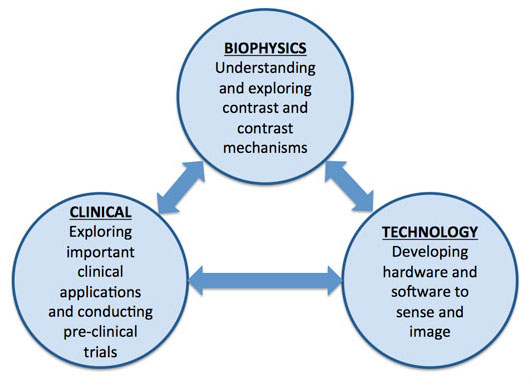The Clinical Applications of Bioimpedance Laboratory
Bioimpedance is a physiological property related to how electrical current flows through tissues of a living organism. It is specifically defined as the resistance the tissue poses to electrical current flow and the ability tissue has to store electrical charge. The Clinical Applications of Bioimpedance Laboratory is developing medical technologies so clinicians can better detect, diagnose, stage, treat, and monitor patients with a variety of pathologies. We are not only working to get these new technologies into the hands of clinicians. We are also using basic science and engineering aspects to better understand the biology influencing the electrical properties of tissue, as well as designing techniques to accurately gauge these properties.
We are developing bench-to-bedside technologies to develop clinical applications for bioimpedance in the following three research areas:
- Biophysics of Bioimpedance: Exploring and quantifying the available electrical property contrast between tissues types and pathologies and developing, testing, and modeling hypotheses that describe the underlying biophysical mechanisms responsible for this contrast.
- Bioimpedance Technology Development: Developing technologies, instrumentation, and computational infrastructure to accurately gauge and image these electrical properties.
- Clinical Applications of Bioimpedance: Leveraging the knowledge gained from understanding contrast levels and mechanisms and the instrumentation designed and constructed to integrate these technologies into the clinical environment.
